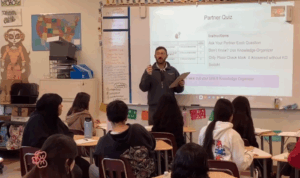The Trump administration has announced plans to review the contents of exhibitions at several Smithsonian institutions. Trump has made clear that he wants all exhibits purged of negative or unpatriotic content. He wants exhibits to show only the positive aspects of American history. This is called censorship. When Trump is gone, the full story of American history will be restored the good, the inspiring but also the dark episodes where people were treated unfairly.
The Washington Post reported::
The White House will launch a sweeping review of Smithsonian exhibitions, collections and operations ahead of America’s 250th-birthday celebrations next year — the first time the Trump administration has detailed steps to scrutinize the institution, which officials say should reflect the president’s call to restore “truth and sanity” to American history.
The vetting process would include reviewing public-facing and online content, curatorial processes and guidelines, exhibition planning and collection use, according to a letter sent to Smithsonian Secretary Lonnie G. Bunch III on Tuesday and signed by White House senior associate Lindsey Halligan, Domestic Policy Council Director Vince Hale and White House Office of Management and Budget chief Russell Vought.
A White House official confirmed the plan, which was posted on the White House website Tuesday and first reported by the Wall Street Journal.
“The Smithsonian’s work is grounded in a deep commitment to scholarly excellence, rigorous research, and the accurate, factual presentation of history,” a Smithsonian spokesperson said in a statement Tuesday afternoon. “We are reviewing the letter with this commitment in mind and will continue to collaborate constructively with the White House, Congress, and our governing Board of Regents.”
The institution already planned its own content review, ordered by the Smithsonian’s Board of Regents in June amid pressure from President Donald Trump. The regents instructed Bunch “to ensure unbiased content” across the institution and report back on “any needed personnel changes.”
The board at that time affirmed Bunch’s authority amid a high-stakes standoff between the White House and Kim Sajet, whom Trump had attempted to fire as director of the National Portrait Gallery. Sajet later resigned, saying her presence had become a distraction from the Smithsonian’s mission.
It is not immediately clear whether the White House’s action will supersede the Smithsonian’s review.
The letter states that the initial review will focus on eight museums: the National Museum of American History, the National Museum of Natural History, the National Museum of African American History and Culture, the National Museum of the American Indian, the National Air and Space Museum, the Smithsonian American Art Museum, the National Portrait Gallery and the Hirshhorn Museum and Sculpture Garden.
To begin the process, officials requested that the museums provide information within 30 days concerning 250th-anniversary programming, current and future exhibition content, and other material.
The White House added that museums were expected to start making changes within 120 days.
“Museums should begin implementing content corrections where necessary, replacing divisive or ideologically driven language with unifying, historically accurate, and constructive descriptions across placards, wall didactics, digital displays, and other public-facing materials,” the letter read.
Since returning to office in January, Trump has moved quickly to overhaul the country’s most prominent arts and cultural institutions. His focus on the Smithsonian has stoked concerns about political interference at the institution, which is not a traditional government agency and is historically considered nonpartisan.
In July, painter Amy Sherald withdrew her upcoming exhibition “American Sublime” from the National Portrait Gallery, citing concerns that the museum discussed removing from the show her painting of a transgender woman posing as the Statue of Liberty. (The Smithsonian said it discussed pairing the work with a video, not removing it.)
That same month, The Washington Post reported that a temporary placard containing references to Trump had been removed from an impeachment exhibit at the National Museum of American History as part of the Smithsonian content review. The museum later updated the display to restore context about Trump’s impeachments following swift outcry from members of the public and several Democratic leaders.
In March, Trump signed an executive order to eliminate “divisive narratives” across the Smithsonian museums and “restore the Smithsonian Institution to its rightful place as a symbol of inspiration and American greatness.”
The order, titled “Restoring Truth and Sanity to American History,” directs Halligan and Vice President JD Vance to remove “improper ideology” from the Smithsonian Institution, including its museums, education and research centers and the National Zoo.


